Posted: November 3rd, 2017 | No Comments »
An excellent article in the Los Angeles Review of Books on several new books on female code breakers in WW2 – Liza Mundy’s Code Girls and Jason Fagone’s The Woman Who Smashed Codes. The LARB article by Joseph Peschel is here. Both books touch on breaking Japanese as well as the much better known stories of the Nazi codes, Enigma, Bletchley and all that…Both add to the library on cracking Japan’s codes alongside Michael Smith’s The Emperor’s Codes from some years ago but which remains very relevant to the topic.
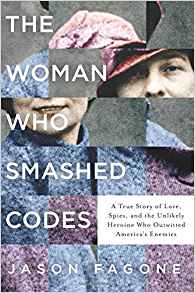
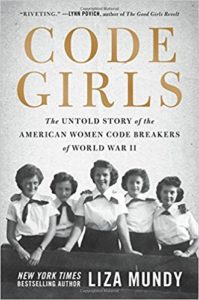
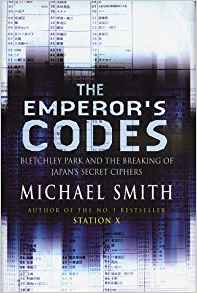
Posted: November 2nd, 2017 | No Comments »
A quick plug for John Saeki’s The Tiger Hunters of Tai O from the excellent Blacksmith Books and set in 1950s Hong Kong…

Hong Kong, 1954. The British colony was not yet ready to hear about a Eurasian policeman having an affair with the police commissioner’s daughter. Twenty-two-year-old Simon Lee tasted swift punishment. He was banished to the outer fringes of the territory, to the far tip of a wild and distant island a stone’s throw from mainland Chinese waters — to Tai O, the ancient and murky trading post where fishermen, salt-farmers and refugees were thrown together with spies, pirates and triads. Pink dolphins swam the waters, eagles fished the sea, and some still believed that a tiger prowled the hills at night.
It was a place haunted by history, where corpses had floated in the bay just a decade earlier when Japanese troops occupied the police station, and everybody had a secret about what they did during the war.
Life was unpredictable for the band of beer-swilling misfits that staffed Tai O Police Station. Some said they needed reining in. But when a stranger was murdered on a beach, accused of being a Communist spy, Lee found himself on an unexpected collision course with his own masters in Central. Who had the dead man been working for? What did the secret agents know? Why was Central so eager to brush the execution aside? And who or what really was the ‘tiger’?
Posted: October 28th, 2017 | No Comments »
I’ll just give a quick plug to Newspapers.com which is a pretty cheap but excellent online source. I personally find I get a lot of good China background and great tips for tracking people on ship sailings etc from the Hawaiian newspapers, which tended to carry more information about China for the sizeable Chinese community in Hawaii than mainland US newspapers. Well, there’s a lot of new sources….
New Hawaii Papers!

If you have family from Hawaii or are interested in Hawaiian history, come check out the Honolulu Star-Advertiser, Honolulu Advertiser, and Honolulu Star-Bulletin. Although the Honolulu Star-Advertiser only began publishing fairly recently (in 2010), the papers that merged to create it—the Honolulu Advertiser and the Honolulu Star-Bulletin—have histories that stretch back more than a century!
The Honolulu Advertiser traces its history back to 1856, with the creation of a weekly paper called the Pacific Commercial Advertiser. In 1882, the Pacific Commercial Advertiser also began publishing a daily edition, and the weekly edition was ended a few years later, in 1888. In 1921, the paper was renamed the Honolulu Advertiser, the name it would keep for the next 90 years.
The Honolulu Star-Bulletin also has a long history. It began as a single-page, hand-written bulletin posted in a shop window in 1870, and by 1882 it had become a paper known as the Daily Bulletin, which then became the Evening Bulletin in 1895. In 1912, the Evening Bulletin combined with a newspaper called the Hawaiian Star to become the Honolulu Star-Bulletin.
In 1962, the Advertiser and the Star-Bulletin entered into a joint operating agreement, in which the two papers would maintain separate, competitive newsrooms but share printing, circulation, administration, and advertising expenses. Finally, in 2010, the two papers were merged to create the Honolulu Star-Advertiser.
In their early years, the Honolulu Advertiser and the Honolulu Star-Bulletin both catered primarily to the white, English-speaking population of Honolulu. But by the mid-20th century, they had begun to make efforts to appeal to more diverse segments of Honolulu’s population as well. If you’re looking for ancestors or other family members in these papers, good places to start include personals columns, society pages, local interest columns, and the like.
Posted: October 27th, 2017 | No Comments »
Saturday, 28th October 2017
4:15 pm – 5:30 pm
Cafe Sambal
Out of China: How the Chinese Ended the Era of Western Domination
Speaker: Robert Bickers
Co-Sponsored with China Crossroads

4:00 PM – Doors Open
4:15 PM – Lecture
5:00 PM – Q&A
5:30 PM – Mixer/Dinner
History matters in China today, and what matters in China matters to us all. This talk explores China’s struggle against foreign power in the 20th Century, and parts of this story that took place in China itself, and overseas: in New York, Hollywood, Canberra, and London, and across the capitals of the West.
Robert Bickers is Professor of History at the University of Bristol. He is the author of five books, including the acclaimed Empire Made Me: An Englishman Adrift in Shanghai (2004) and The Scramble for China: Foreign Devils in the Qing Empire, 1832-1914 (2011). Bickers specializes in modern China, the history of colonialism and, in particular, the British Empire and its relations with China and Shanghai. His latest book released earlier this year is Out of China: How the Chinese Ended the Era of Western Domination (2017)
RSVP : bookings@royalasiaticsociety.org.cn
ENTRANCE: Admission: 100 RMB
VENUE: Cafe Sambal; 259 Jiashan Lu, Jiashan Market, Block A, No 37, near Jianguo Xi Lu
Posted: October 26th, 2017 | 3 Comments »
I’ve blogged before about the Swiss traveller and author Ella Maillart. Her book Forbidden Journey is a great read and recounts her seven month trip in 1935 from Peking to Turkestan (Xinjiang if you prefer) and beyond. It is of course a great companion to Peter Fleming’s One’s Company, his account of the same journey. Maillart got annoyed with Fleming for rushing along so at to get back to Scotland for the start of the Grouse Season, Fleming (who had no sense of smell or taste) ate anything and Maillart photographed everything. Indeed they neither fell into bed together nor shot each other but remarkably remained great friends. It’s rare you get two books about the same trip with contrasting impressions.
Maillart continued travelling. In 1937 she returned to Asia for Le Petit Parisien to report on Afghanistan, Iran and Turkey, while in 1939 she undertook a trip from Geneva to Kabul by car, in the company of the Swiss writer, Annemarie Schwarzenbach. Schwarzenbach was a beguiling figure – a writer, traveller, adventurer, libertine and social experimenter who died far too young.
I recently came across a series of photographs of Schwarzenbach by Marianne Breslauer (here) – they are amazing and also offer some background to Schwarzenbach’s fascinating, but short, life. The collection includes this one of Maillart (right) and Schwarzenbach I had not seen before…

Posted: October 25th, 2017 | No Comments »
HK:PM Â Â Â Â Â Â [ Hong Kong Night Life 1974-1989 ]
by Greg Girard
 Pussy Cat Club, Wanchai, 1974
Pussy Cat Club, Wanchai, 1974
A photography exhibition organized by Blue Lotus Gallery
EXHIBITION OPENING: 27 October 2017, 6–8pm
EXHIBITION RUNS UNTIL 12 November 2017
VENUE: PMQ: Room 507s, 35 Aberdeen Street, Central, Hong Kong
OPENING HOURS: Daily including Saturday & Sunday 11am to 7pm
HK:PM is an exhibition of photographs of Greg Girard’s nocturnal wanderings in Hong Kong made between 1974 and 1986. The exhibition also marks the release of the book of the same title, published by Asia One. HK:PM takes you through the neon lit streets and into tattoo parlours, dive bars and the hotel rooms of soldiers and sailors who frequented them. Other scenes depict the pre-dawn emptiness of the city’s streets and alleys bathed in the colours of artificial light. With a foreword by award winning Hong Kong director Ann Hui, HK:PM adds a missing photographic link to the visual record of Hong Kong in the 1970s and 80s.
This is Girard’s first solo show in Hong Kong since 2008 and the first time these early photographs are collected and displayed as a dedicated body of work. Girard, a respected Canadian photographer, whose work has examined the social and physical transformations in Asia’s largest cities for over 30 years, is also co-author with Ian Lambot of the seminal book “City of Darknessâ€, the definitive record Hong Kong’s infamous Kowloon Walled City, and its updated re-release “City of Darkness Revisitedâ€. Other titles include “Phantom Shanghai†listed as one of the top 10 photography books of all time by The Independent (UK), “Hanoi Calling†and, earlier this year, “Under Vancouver 1972-1982†and “Hotel Okinawaâ€. The book HK:PM will be available during Greg Girard’s exhibition at PMQ [#507s] 27 October to 12 November 2017.
Limited edition prints and books will be available during the exhibition.
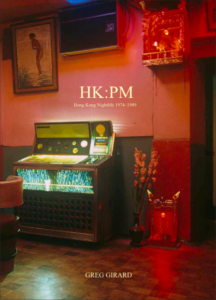
Posted: October 24th, 2017 | No Comments »
The Flying Tigers shelf is getting pretty heavy these days (Jonathan Kalman reportedly has a book coming on and around the subject too I think)…still, Eugenie Buchan’s contribution – A Few Planes for China – looks like a good addition….there’s a good and lenthy review of the book here courtesy of the Asian Review of Books…
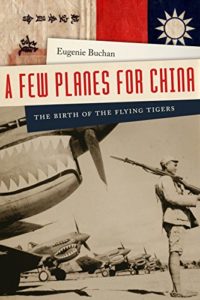
On December 7, 1941, the surprise attack on Pearl Harbor plunged the United States into armed conflict with Japan. In the following months, the Japanese seemed unbeatable as they seized American, British, and European territory across the Pacific: the Philippines, Singapore, Hong Kong, the Dutch East Indies. Nonetheless, in those dark days, the US press began to pick up reports about a group of American mercenaries who were bringing down enemy planes over Burma and western China. The pilots quickly became known as Flying Tigers, and a legend was born. But who were these flyers for hire and how did they wind up in the British colony of Burma?
The standard version of events is that in 1940 Colonel Claire Chennault went to Washington and convinced the Roosevelt administration to establish, fund, and equip covert air squadrons that could attack the Japanese in China and possibly bomb Tokyo even before a declaration of war existed between the United States and Japan. That was hardly the case: although present at its creation, Chennault did not create the American Volunteer Group. In A Few Planes for China, Eugenie Buchan draws on wide-ranging new sources to overturn seventy years of received wisdom about the genesis of the Flying Tigers. This strange experiment in airpower was accidental rather than intentional; haphazard decisions and changing threat perceptions shaped its organization and deprived it of resources. In the end it was the British—more than any American in or out of government—who got the Tigers off the ground. On the eve of Pearl Harbor, the most important man behind the Flying Tigers was not Claire Chennault but Winston Churchill.
Posted: October 23rd, 2017 | No Comments »
Rickshaws crossing the Garden Bridge from Hongkew into the central Settlement with Broadway Mansions looming behind them – this picture was taken in 1936 for the Honolulu Advertiser newspaper…








 Pussy Cat Club, Wanchai, 1974
Pussy Cat Club, Wanchai, 1974

